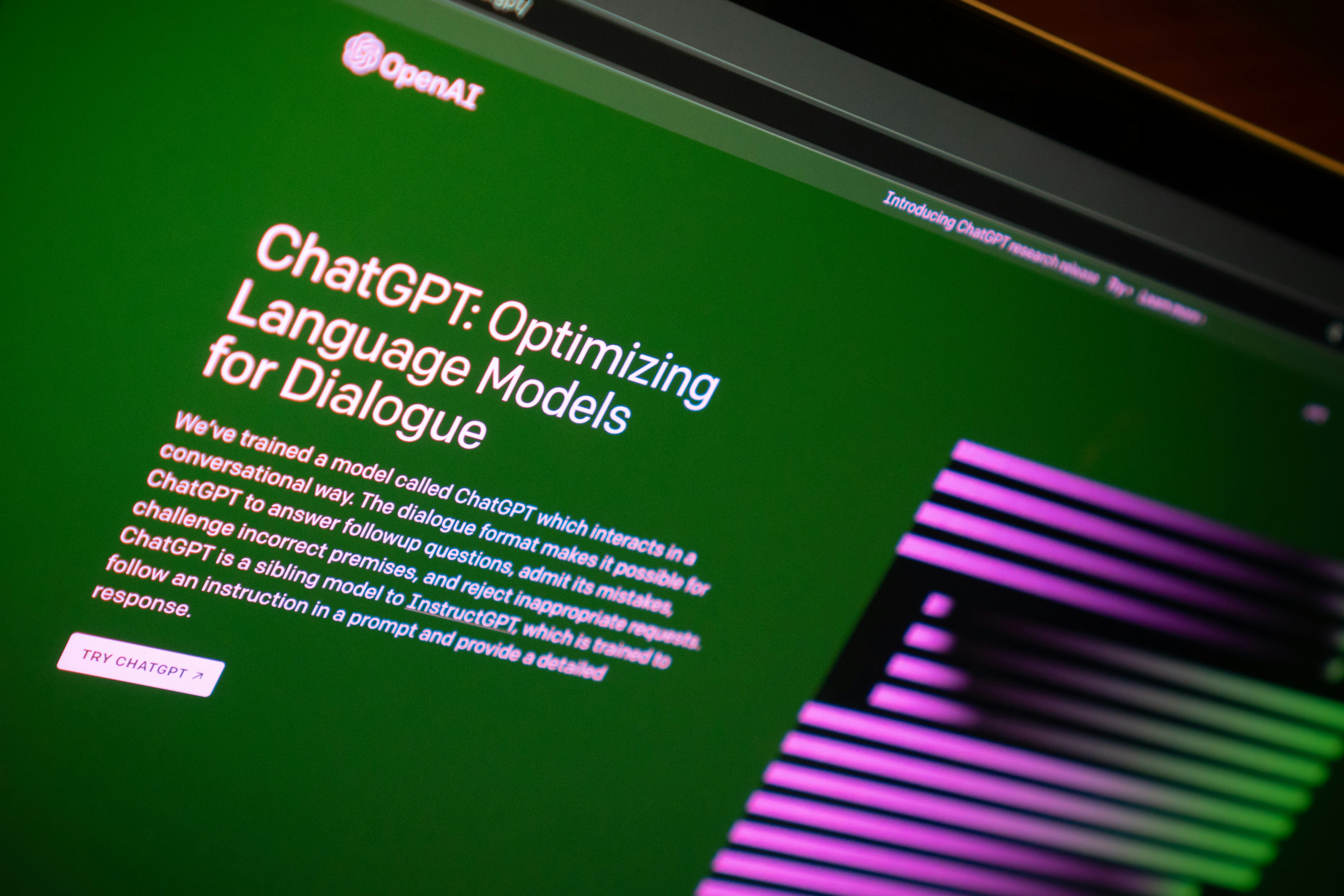
Introduction to Generative Pre-Trained Transformers
Generative Pre-Trained Transformers (GPT) represent a significant breakthrough in the realm of artificial intelligence, particularly in natural language processing (NLP). Their development emerged from the need for models capable of understanding and generating human-like text. The first iteration of GPT was introduced by OpenAI in 2018, building on the transformer architecture introduced in the 2017 paper, “Attention is All You Need,” by Vaswani et al. This novel architecture revolutionized the processing of sequential data, allowing models to efficiently manage long-range dependencies in text.
At its core, a GPT model operates using a mechanism called self-attention, which allows it to weigh the influence of different words on one another within a given context. This enables GPT to grasp the nuances of language, making it adept at tasks such as language comprehension, text generation, and even sentiment analysis. The pre-training phase involves exposing the model to a vast amount of text from diverse sources; this exposure allows the model to learn grammar, context, and factual knowledge. Following this, a fine-tuning phase can be adopted for specific tasks, ensuring that the model performs exceptionally well in particular applications.
The significance of GPT models is underscored by their widespread adoption across numerous industries. From chatbots that provide customer service to content creation tools that can generate articles and creative writing, the applications are vast and varied. Furthermore, GPT models have made notable strides in language translation, enhancing accessibility and understanding between diverse linguistic groups. As the demand for advanced AI solutions continues to rise, the importance of Generative Pre-Trained Transformers in shaping the future of human-machine interaction cannot be overstated.
How GPT Works: The Mechanisms Behind the Magic
Generative Pre-Trained Transformers (GPT) represent a significant advancement in the field of natural language processing (NLP), achieved through innovative mechanisms that enable these models to generate coherent and contextually relevant text. At the heart of GPT’s functionality lies the transformer architecture, which employs a sequence of encoders and decoders to process and generate language. Unlike previous models relying heavily on recurrent neural networks (RNNs), the transformer model utilizes a self-attention mechanism that allows it to weigh the importance of different words in a sentence relative to one another. This feature enhances its ability to capture long-range dependencies, thereby facilitating a deeper understanding of context.
Central to the operation of GPT is the attention mechanism, which significantly improves the model’s capacity to focus on relevant parts of the input data. The self-attention mechanism calculates attention scores for each word in a sequence, allowing the model to determine which words are most relevant when predicting the next word. By employing layers of self-attention and feed-forward networks, GPT is capable of generating nuanced responses that align well with the preceding text.
The learning process of GPT can be broken down into two key phases: pre-training and fine-tuning. During pre-training, the model is exposed to a vast corpus of text, enabling it to learn the intricacies of language, including grammar, vocabulary, and context. This phase emphasizes next-word prediction, where GPT uses historical text to predict subsequent words accurately. Following this foundational learning, the fine-tuning phase involves training the model on a smaller, domain-specific dataset, enhancing its performance for particular tasks such as translation or summarization. This dual-phase approach underpins GPT’s impressive ability to adapt and provide contextually appropriate outputs across diverse applications in NLP.
Applications of Generative Pre-Trained Transformers
Generative Pre-Trained Transformers (GPT) have emerged as a transformative technology in the field of Natural Language Processing (NLP), showcasing a myriad of applications that significantly enhance operational efficiency across various industries. One of the most notable uses is in customer service through chatbots, where businesses employ GPT to create intelligent virtual assistants. These chatbots execute intricate conversations and respond to customer inquiries in natural language, ultimately leading to improved satisfaction and operational cost reductions.
In the educational sector, GPT serves as an interactive learning tool. Its capability to provide personalized learning experiences allows students to engage with the material at their own pace. Many institutions leverage GPT to create customized quizzes and supplementary materials, assisting educators in delivering more effective instruction. This adaptability fosters a more engaging learning environment and caters to the diverse needs of students.
Furthermore, content generation for marketing has significantly benefited from the deployment of GPT. Brands utilize this technology to generate marketing copy, social media posts, and even entire blog articles, enabling marketers to save time while maintaining high-quality content. This accelerates the content creation process and allows for a greater focus on strategy and creativity.
Another compelling application of GPT is seen in code assistance, where developers utilize these models to receive code suggestions, debugging tips, and even documentation. This capability drastically reduces development time, enhances accuracy, and aids programmers in overcoming challenges encountered during project execution.
The impact of GPT extends to various industries, including publishing, gaming, and software development, effectively transforming workflows and enhancing overall productivity. For instance, in publishing, authors can utilize GPT to brainstorm ideas or draft storylines, streamlining the creative process. Similarly, in gaming, developers implement these language models to create intricate dialogues and scripts, enriching the player’s experience. Overall, the adoption of Generative Pre-Trained Transformers is reshaping the landscape of numerous fields by improving efficiency and fostering innovation.
Ethical Considerations and Future of GPT Technology
The rapid advancements in Generative Pre-Trained Transformers (GPT) have ushered in remarkable prospects for natural language processing (NLP). However, this evolution also brings forth significant ethical considerations that warrant careful examination. One of the major concerns is the prevalence of bias within AI-generated content. Given that GPT models learn from vast pools of data scraped from the internet, they may inadvertently perpetuate societal biases seen in the training datasets. Developers must actively work to identify and mitigate these biases to create systems that are not only effective but also equitable.
Another pressing issue is the proliferation of misinformation. GPT technology’s ability to generate coherent and contextually relevant content can be exploited for malicious purposes, such as creating deceptive news articles or impersonating individuals. This poses serious risks to public discourse and the integrity of information. To combat this challenge, developers and researchers have a responsibility to implement features that can help detect and flag misleading content while promoting transparency around how these models generate their outputs.
Data privacy is yet another critical concern surrounding the use of GPT technology. As AI systems increasingly rely on user data to improve their performance, the potential for misuse or unauthorized access to sensitive information becomes heightened. It is essential for researchers to adhere to strict data governance practices while developing these models, ensuring that user consent and anonymity are prioritized.
Looking to the future, GPT technology is poised for significant enhancements, potentially addressing current limitations in bias and misinformation. As NLP continues to evolve, we may witness the emergence of specialized applications that leverage tailored instructional datasets to generate content in specific domains, such as healthcare or law. This targeted approach could augment the reliability of generated outputs. Ultimately, careful stewardship of these powerful tools will shape the ethical landscape of AI, determining how responsibly they are integrated into society.
